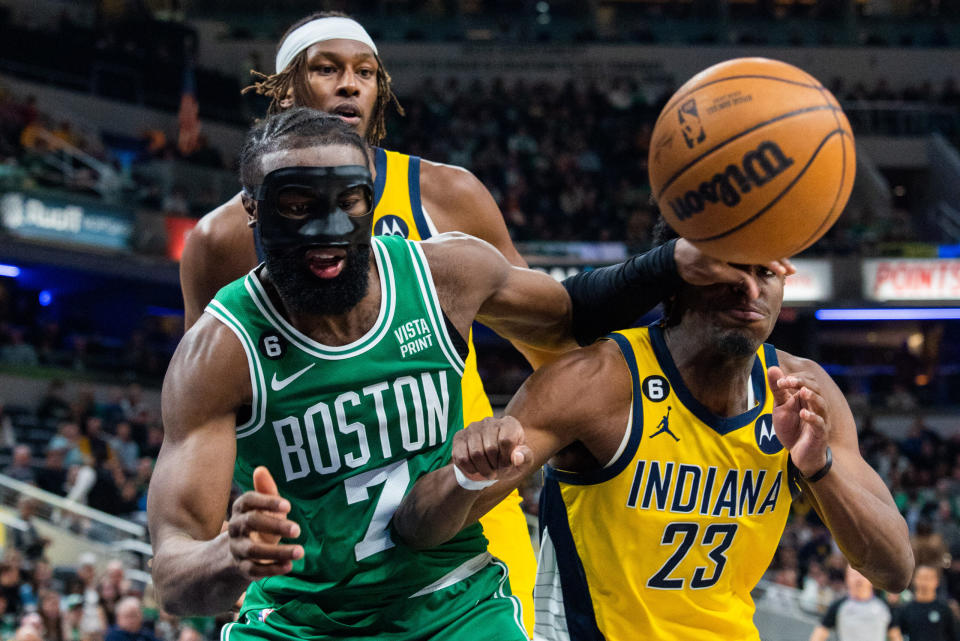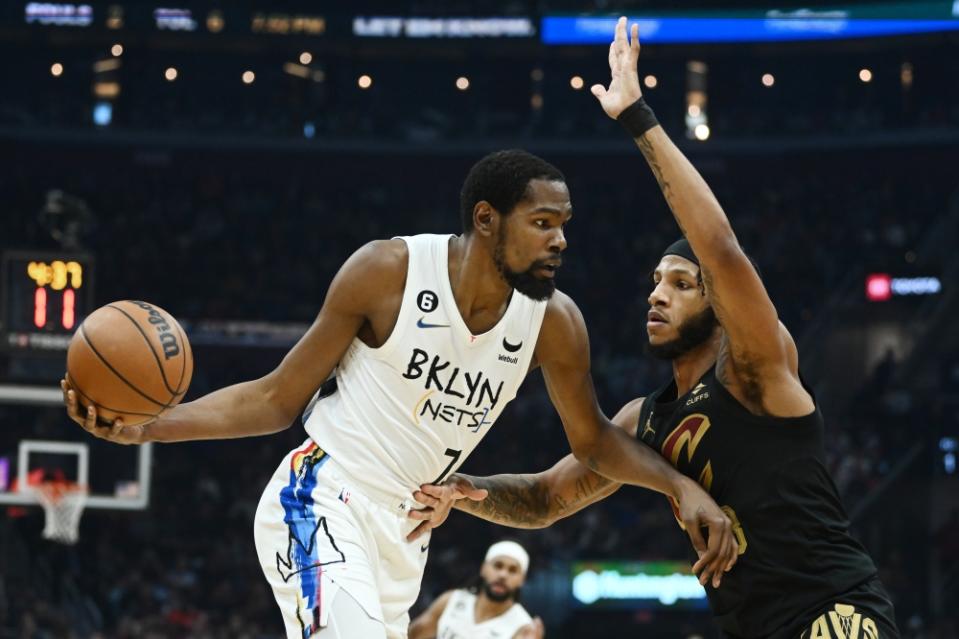New extension limits? How they would affect the league

We got an update on Collective Bargaining Agreement (CBA) talks this week and the first bit of potential changes. According to The Athletic’s Shams Charania, significant progress has been made in recent weeks on key issues between the NBA and the Players Union (NBPA), and there’s hope that a deal is within grasp. The current deadline to get a deal done is March 31, and the NBPA has informed the league they intend to complete a deal by then.
Charania also provided some notes on potential changes to the CBA that could come. One would be altering the lower luxury tax tiers to make it more viable for teams to get into the tax. They’re also discussing lowering the NBA draft age eligibility to 18 years old, and implementing cap smoothing to prevent massive cap spikes like in 2016.
The other change that is being discussed is modifying the current contract extension limits. Per Charania, both sides are discussing increasing the maximum first-year salary in an extension from 120 percent to 140-150 percent. The extension rules were bound to be changed considering how much the salary cap has risen over the past seven years, but exactly how they could get changed was unknown until now.
Below is a breakdown of the current extension rules versus the newly proposed ones, and the ripple effects they can have on the league.
Why the rules are getting changed

Ken Blaze-USA TODAY Sports
The current extension rules are now considered limiting considering how much the salary cap has risen. Certain players will be incentivized to bypass their maximum extension amount so they can earn more in free agency. In particular, no-brainer maximum players always hit free agency to sign max contracts. The only way to override the 120 percent maximum first-year salary and get a maximum deal in an extension is if a player meets the supermax criteria.
In 2019, we saw a lot of All-Stars hit free agency in part to join new teams, but mainly to sign maximum contracts they otherwise couldn’t have gotten in an extension. This includes players like Kawhi Leonard, Kyrie Irving, Jimmy Butler, Klay Thompson, and Kemba Walker. Several other veterans like Khris Middleton and Tobias Harris got near-maximum contracts that they couldn’t have gotten close to in an extension.
Between 2016 and 2019, players trended toward reaching free agency since that was the most lucrative path in an ever-rising cap environment. That shifted in 2020 when the COVID-19 pandemic happened and suspended the NBA season, leading to a significant loss of revenue. When the competition resumed, the salary cap stalled and any rise in the cap over the remainder of the current CBA was agreed to be no less than 2 percent but no more than 10 percent.
The uncertainty of the salary cap over the short-term led to an extension boom over the next few offseasons. Many players that would’ve hit free agency had the NBA’s financial trajectory gone as projected instead chose to secure long-term money over the length of the remainder of the CBA and current TV media rights deal. For many of these players that were set to enter free agency in 2021 and 2022, the stalling of the cap made their maximum extension amounts just as lucrative as their maximum contract amounts in free agency.
Now with the pandemic no longer impacting the league, the rate at which revenue is increasing is closer to pre-pandemic levels. The 2022 salary cap got capped at $123.65 million, a 10 percent increase from last year’s amount. That, in addition to the new TV media deal which would be implemented starting in 2025-26, could lead to fewer players extending to secure more money in free agency again. But even without these future factors in mind, the extension rules are still considered limiting by today’s standards despite the record number of extensions between 2020 and 2023.
The current veteran extension rules vs. the new ones

N Nathan Ray Seebeck-USA TODAY Sports
Veteran players on contracts spanning four years or less become eligible to extend on the second-year anniversary of signing or extending their current contract. Veteran players on longer deals become eligible to extend on the third-year anniversary. This applies to all contracts except rookie-scale deals signed by players selected in the first round of the NBA draft, which follow a different set of extension rules.
In a veteran extension, the maximum first-year salary can be the greater of either up to 120 percent of the player’s previous salary, or 120 percent of the estimated average player salary. The second year can have a maximum raise of 8 percent of the new first-year salary, and that amount is the fixed maximum amount each additional season in the extension can increase by.
For example, Jaylen Brown will become eligible this offseason to extend for up to four years, $153.3 million (base salary, not including incentives). This would give him a first-year salary in 2024-25 of $34.2 million, which is a 120 percent raise off his $28.5 million base salary for 2023-24. An 8 percent raise of $34.5 million is $2.7 million, which would be the amount each subsequent season is increased by. This would give Brown respective salaries of $34.2 million, $36.9 million, $39.7 million, and $42.4 million, totaling $153.3 million over four years.
Brown’s maximum extension amount is considered below market value and he’s considered unlikely to extend ahead of 2024 free agency. In fact, he may be considered a no-brainer maximum player and could still become supermax eligible if he earns All-NBA honors this season. The maximum contract amount that he can sign with the Celtics in 2024 free agency is currently projected at five years, $255.8 million.
However, increasing the first-year salary to a 150 percent raise of the previous salary would allow Brown to get his projected maximum contract amount through an extension. A 150 percent increase from his $28.5 million base salary for 2023-24 is $42.8 million, which is $8.6 million more than what would be his first-year salary under the current extension rules. Throw in 8 percent raises, and his four-year extension maximum totals to $191.6 million. This amount is actually slightly higher than his projected four-year maximum amount via free agency, but there’s still room for the current cap projection to grow.

Rob Gray-USA TODAY Sports
In the short term, the proposed extension rule changes are aimed at players like Brown, as well as below-max players like Lauri Markkanen, Dejounte Murray, OG Anunoby, and Domantas Sabonis. These are players who were signed to team-friendly extensions off their rookie contracts but vastly outplayed their values. Essentially, their teams are being penalized by the current extension rules since now they likely cannot extend them when they become eligible this offseason.
Here are the maximum extension amounts for these players starting this offseason under the current rules:
Lauri Makkanen: three years, $70.2 million
Dejounte Murray: four years, $95.2 million
OG Anunoby: four years, $100.2 million
Domantas Sabonis: four years, $104.3 million
Here are their maximum extension amounts if they get 150 percent first-year salary with 8 percent raises:
Lauri Makkanen: three years, $87.7 million
Dejounte Murray: four years, $119 million
OG Anunoby: four years, $125.3 million
Domantas Sabonis: four years, $130.4 million
Would these new proposed extension limits bridge the gap for these players to extend this offseason? For some yes, but not for those still aiming for a full maximum contract.
[lawrence-related id=1540048]
[lawrence-related id=1735970]
[lawrence-related id=1735963]
[lawrence-related id=1735967]

